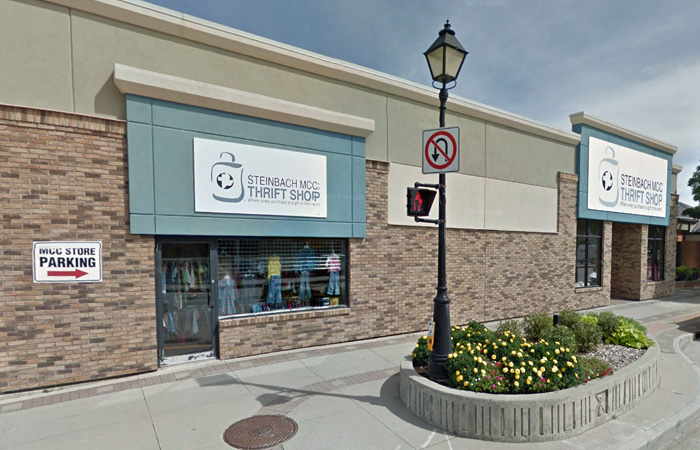Rethinking Lifestyle
Why I Won’t Stop Shopping at the Thrift Store

There’s no question that shopping at the thrift store saves me money. A lot of money. Considering that the average Canadian household spends over $3300 a year on clothing and accessories, and the thrift store easily offers 90% savings, the math is not complicated. But the other day a friend of mine challenged me. He asked why I shop at the Thrift Store, when I make a good salary and can afford to pay full price. How is it fair for me to take the benefits that should go to people in our community who can’t afford to buy new? It’s a good question, and it made me think. When we were younger, MCC thrift stores were called “Selfhelp”, and it was used mostly by people with less money who couldn’t afford otherwise. The clothes were out-of-style and visibly used, and if you shopped there you probably didn’t advertise it. But today, the second-hand world is very different.
The rise of “Fast Fashion” (dramatically shortened fashion cycles and low-cost manufacturing) has led to plummeting clothing prices. In fact the Financial Post reported in 2013 that the cost of clothes was down by a third since 2000, while other costs rose by about 24% in the same period. As a result, the average consumer bought 60% more clothing in 2014 than in 2000, according to the World Resources Institute, but kept each garment only half as long. Canadians, specifically, buy on average 70 new articles of clothing each year. All this means that donations of unwanted clothing are up, and the result is that only half of the thousands of tonnes of clothing donated each year ever makes it to the shelf – and only half of that is successfully sold, according to Tonny Colyn, national donations manager in Canada for the Salvation Army. Most of the rest are either reprocessed as rags and other low-grade products, or exported overseas – mostly to Africa. In fact, Africa receives so much of it that in 2016 a bloc of six East African countries proposed an import ban on used clothing. That’s because the hundreds of millions of pounds of excess clothing pouring into their borders every year have wiped out their local textile industries and are clogging their waste streams. Piles of our clothes are being burned just to get rid of them.
But the impact of overconsumption doesn’t stop there. Textile production is one of the most polluting industries in the world, producing more emissions than international flights and maritime shipping. Making a single cotton shirt requires 2,700 litres of water (enough for one person for 2.5 years) while in 2015, textile production of polyester alone resulted in more than 706,000,000,000kg of CO2 emissions (the equivalent of 153.5 million passenger vehicles). Yet once it’s created, almost 60% of all of the world’s clothing ends up in a landfill or is incinerated within its first year after production. And while you might think buying new is good for jobs, the Canadian textile industry long ago succumbed to the pressure of foreign sweatshops and automation. In the drive for ever-lower prices, even retail wages in Canada are under downward pressure from chains like Walmart and Target, according to Erin Weir of the United Steelworker’s Union.
In case there is any room for doubt, the solution to this problem is NOT to stop donating clothes. Your good quality donations are the only way thrift stores can continue to divert some of the flow of clothing waste back into useful service. Your role and mine is to donate generously, but also to buy more thrift, and reduce the flow by buying less new clothes. Aside from the fact that buying new clothes is the cause of the problems mentioned above, there are plenty of reasons to shop at a thrift store instead. Take my friend’s argument that a thrift store should benefit the poor. In the case of the Steinbach MCC Thrift Store, it certainly does. With the money I and others spent there instead of buying new at WalMart, the Steinbach Community Assistance Centre was able to give $40,000 to 13 different local charities in 2017 – in addition to the work of the MCC which supports individuals around the world who would not even have the basic necessities of water, food and shelter. People in serious need locally can also rely on the Thrift Store to provide emergency necessities at reduced or no cost.
My friend and I both grew up in a world where “stuff” had value. Today though, the glut of disposable goods is a far greater burden than it is a benefit. Every dollar I don’t spend at a retail store, then, is one less dollar contributing to the problem. And it’s even more than that. Buying and using the excess stuff that society generates allows me the financial flexibility to support local businesses, environmentally responsible companies, and charities that actually contribute to society. Certainly, if everyone shopped at the Thrift Store, the supply would eventually run out. That would be wonderful. However, until that time I feel lucky to be able to shop where I can save money, reduce waste, and support the disadvantaged all at once. Truly “Every Purchase is a Gift to the World”. Thank you Steinbach MCC for your good work.




